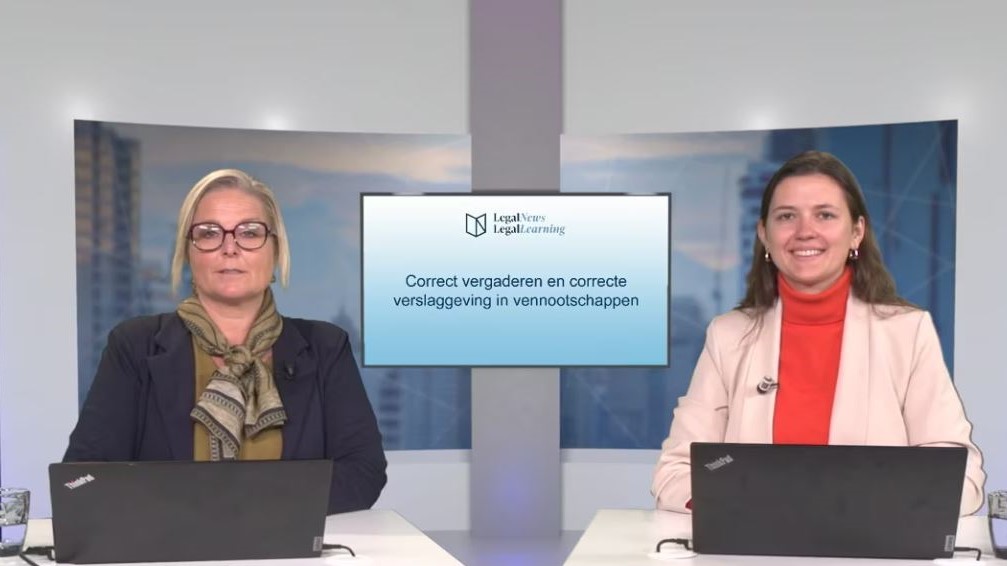Aandeelhoudersovereenkomsten
in het licht van de nieuwe wetgeving
Mr. Michaël Heene (DLA Piper)
Webinar op vrijdag 31 mei 2024
Ondernemingsstrafrecht:
wat wijzigt er door boek I en boek II van het Strafwetboek?
Mr. Stijn De Meulenaer (Everest)
Webinar op dinsdag 11 juni 2024
HR-aspecten bij M&A transacties
Mr. Nele Van Kerrebroeck (Linklaters)
Webinar op donderdag 16 mei 2024
An introduction to anti-dilution protection in Belgian venture capital transactions (Loyens & Loeff)
Author: Robrecht Coppens (Loyens & Loeff)
Date of publication: 03/10/2018
Anti-dilution protection has become a common feature in Belgian venture capital transactions. Although the rationale behind this concept is clear (i.e. price protection), the practical implementation thereof can give rise to numerous issues as anti-dilution mechanisms look to harmonise (often rigid) concepts of law with sophisticated mathematical models.
The concept of (conventional) anti-dilution protection
Conventional anti-dilution provisions aim to protect certain existing shareholders (i.e. investors) against the (economic) dilutive effect of future share issuances.
Such provisions are designed to apply in situations in which shares are issued to new investors at a price per share lower than the price per share previously paid by the protected investors (so-called down rounds). When anti-dilution protection is triggered, the protected investor’s shareholding will be adjusted based on the price per share that was paid by the new investors. Hence, the protected investor will obtain the right to receive additional shares, calculated in accordance with a specific formula.
Conventional anti-dilution protection should be distinguished from the statutory anti-dilution mechanisms (such as preferential subscription rights), as they each serve their own purpose. Indeed, statutory anti-dilution mechanisms mainly aim to protect existing shareholders against dilution (percentage-wise only) in the context of future shares issuances, whereas conventional anti-dilution provisions offer a more comprehensive protection through the potential adjustment of the original (economic) valuation of a company based on the pricing applied in future capital rounds.
When drafting anti-dilution provisions, a fair balance should therefore be sought between (i) the early investor’s desire for enhanced price protection and (ii) the founders’ wish to limit the re-allocation of the investment risk. It should not be the investors’ intention to impose an anti-dilution mechanism that could potentially cause a disruptive balance shift among the shareholders, as this could prove counter-productive and jeopardise the company’s growth potential.
Calculation methods
Conventional anti-dilution protection can be calculated pursuant to different methods. The two main calculation methods are (a) full-ratchet protection and (b) weighted average protection.
The full-ratchet protection is the most investor-friendly but can be disruptive, as it provides for the adjustment of the protected investor’s shareholding as if it had invested at the new (lower) issue price per share. Consequently, the protected investor will be able to fully preserve the value of his investment in the event of a down round.
In comparison, the weighted average protection is slightly more balanced as it examines the relative dilutive impact of the down round on the protected investor, and this in the context of the overall equity structure. The weighted average protection thus calculates the relative dilution suffered by the protected investor and compensates such investor accordingly. This type of anti-dilution protection can be further subdivided into broad-based and narrow-based variants. Broad-based weighted average protection will examine the relative dilution to the protected investor in the context of the fully diluted share capital, whereas the narrow-based weighted average protection will, in principle, examine the relative dilution of the protected investor in the context of the undiluted share capital. The broad-based variant is generally preferred by founders as it further minimises the dilutive effect of the protected investor and therefore limits the number of additional shares such investor would be entitled to.
Legal structuring under Belgian law
Although a broad spectrum of conventional anti-dilution methods is conceivable, not all of these anti-dilution methods have been well established in Belgian legal practice. In particular, the use of convertible shares as anti-dilution mechanism, which serves as default mechanism in the Anglo-Saxon venture capital practice, appears to be fairly uncommon in Belgium.
From a Belgian law perspective, conventional anti-dilution protection can be structured in various ways. Most seen in practice are (i) the issuance of new securities such as anti-dilution warrants, or (ii) a contractual arrangement aiming at the issuance of new shares/bonus shares or the granting of call options on the shares of other existing shareholders.
At the same time, the benefit of anti-dilution protection is, in the end, regularly waived by investors. Indeed, from the investors’ point of view, anti-dilution protection also serves as a tool to improve their bargaining position in the context of future investment rounds or exits. Moreover, it cannot be excluded that the ill-considered exercise of anti-dilution protection could prove too disruptive for certain companies.
More in general, the Belgian venture capital market is still in the development phase and needs to gain further maturity, especially in comparison with our immediate neighbouring countries who already use more advanced techniques and practices. This is often facilitated by investor-friendly company laws. Looking forward to the coming months, the contemplated adoption of the new Belgian Companies’ and Associations’ Code, which provides for a fundamental reform of Belgian company law, could also make an important contribution to that effect (in particular through the introduction of the new BV, which will offer much more flexibility and contractual freedom).
For more information, feel free to contact the authors or to consult their article in TRV-RPS on this topic: “R. Coppens and F. Jorens, “Anti-dilutiebescherming in venture capital: zin en onzin”, TRV-RPS 2018/3, p. 155-175” (available in Dutch only).
» Bekijk alle artikels: Vennootschappen & Verenigingen
















